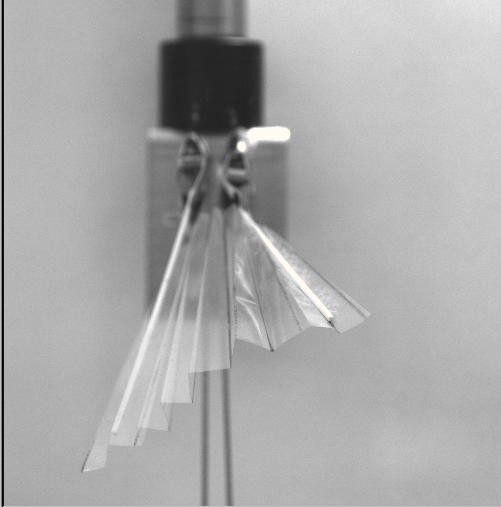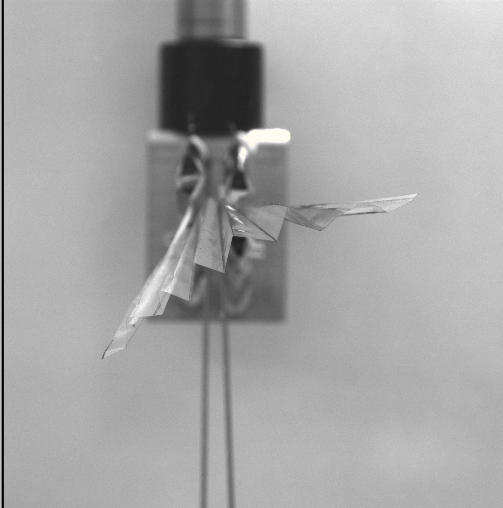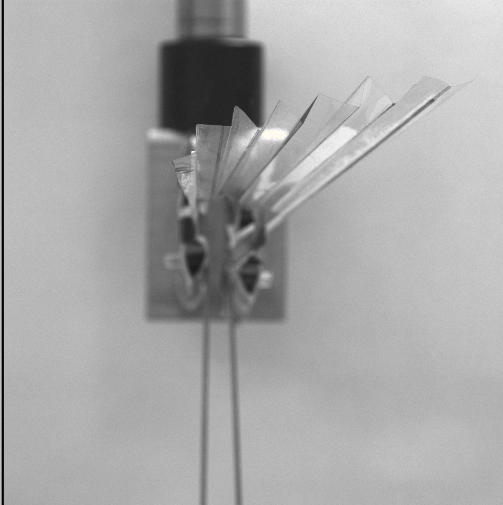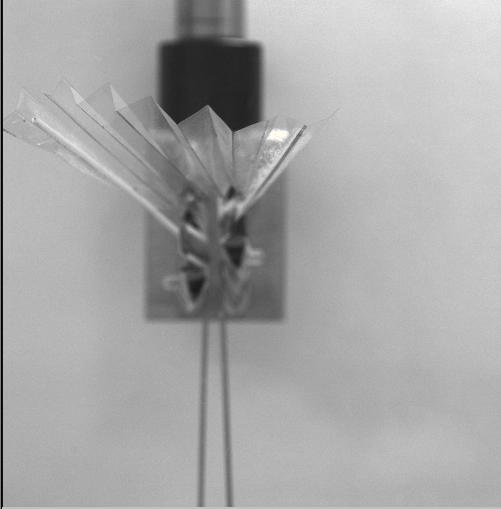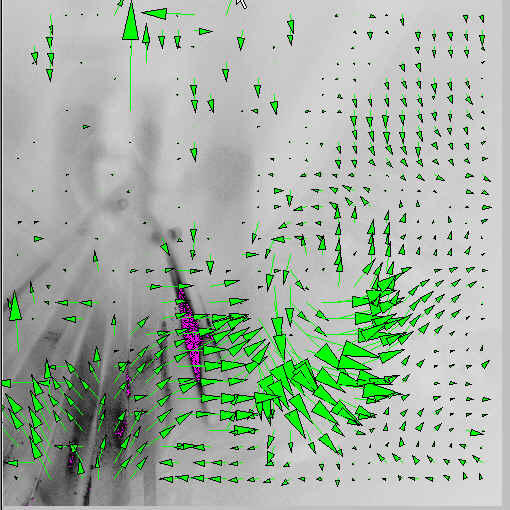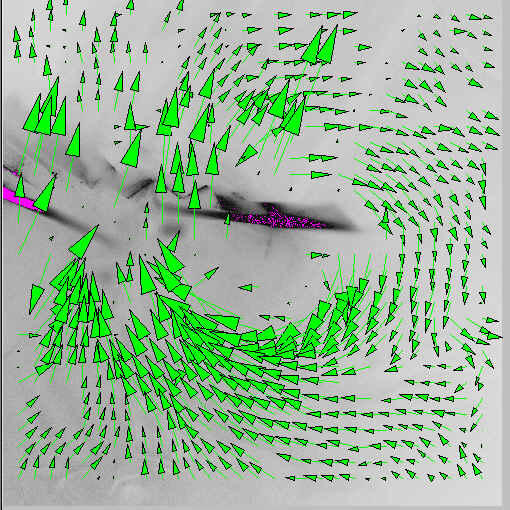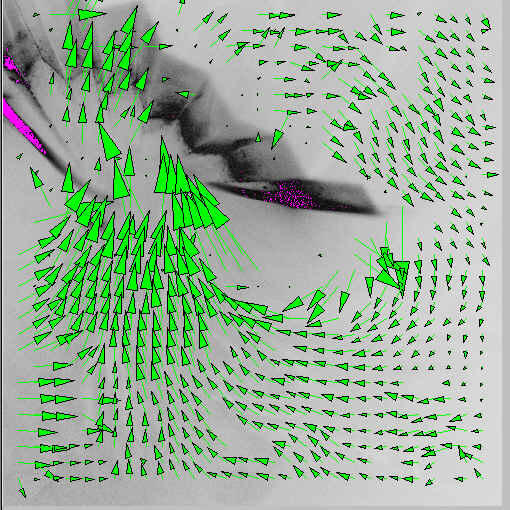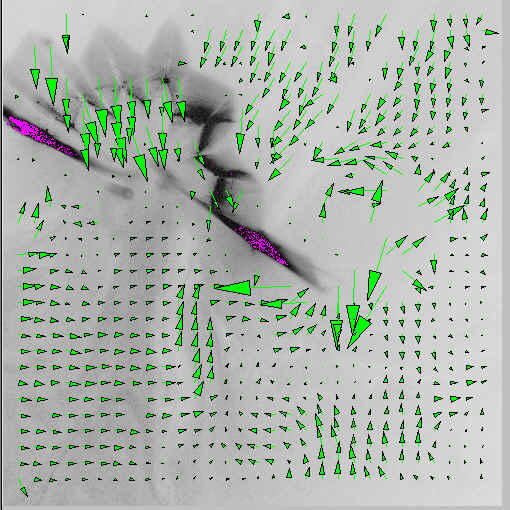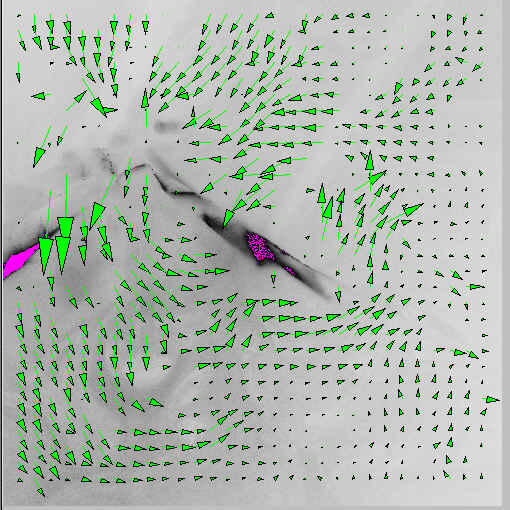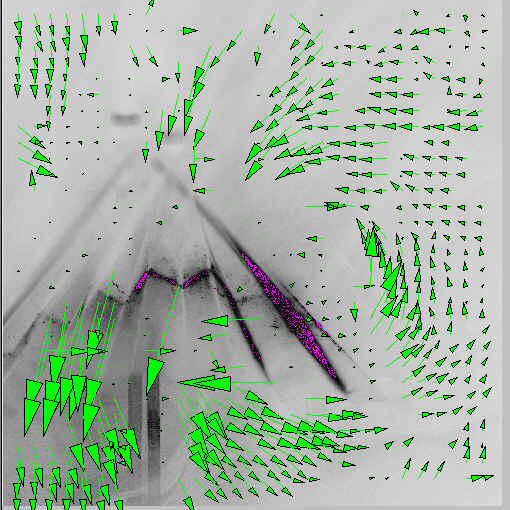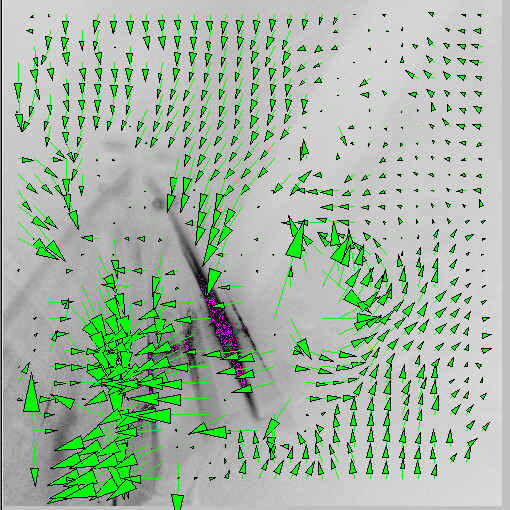99a-Thorax: 5X, Fan-fold wing, 2 DOF
Completed Aug 1999. Status: Buckled links
Description
The
99a
thorax consisted of two four-bars folded from 12.5
mm stainless steel (etched by
Accutech).
Polystyrene wing spars were attached to the
distal links of each 4-bar and a 12.5
mm polyester
fan-fold wing was attached.
The steel flexures were reinforced w/ tape.
Actuation was achieved
with VCAs driving each 4-bar through push rods.
The wing was driven up to 30 Hz but
performance
degraded at higher frequencies due to the limitations
on the VCA.
The base link was a 26mm long box beam.
The side links were 28mm long triangle beams.
The top
link was a 4mm long triangle beam.
All links were 4mm on a side. The steel flexures
were 2mm long.
Still images for wing at various phases of stroke
The thorax could provide up to 120 degrees of flapping or
90 degrees of rotation (the latter is
demonstrated in the movie below). However, these ranges
could not be achieved independently
as one could be achieved only
at the expense of the other.
The still images here demonstrate a
stroke trajectory in which 45 degrees
of rotation and 60 degrees of flapping is achieved.
NB: The wing is incorrectly mounted with a vertical stroke plane
instead of a horizontal one.
PIV images for wing running at 17 Hz
These particle image velocimetry (PIV) images were taken for
the wing being run at 17 Hz in still air.
The velocity flow patterns are those for olive oil particles.
Some interesting things to notice: (1) the
fan-fold wing
billows out (see the beginning of the downstroke), probably
effectively reducing the
amount of lift that otherwise would
be generated with a rigid wing; (2) the sudden change in the
particle
momenta between the end of the upstroke and the
beginning of the downstroke would indicate a large
lift force
on the wing; and (3) there is evidence of vortex shedding in
the 2nd frame of the downstroke,
which should also increase
lift.
Movie demonstrating +/-45 degree motion and motion up to 30 Hz (.asf format)


